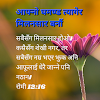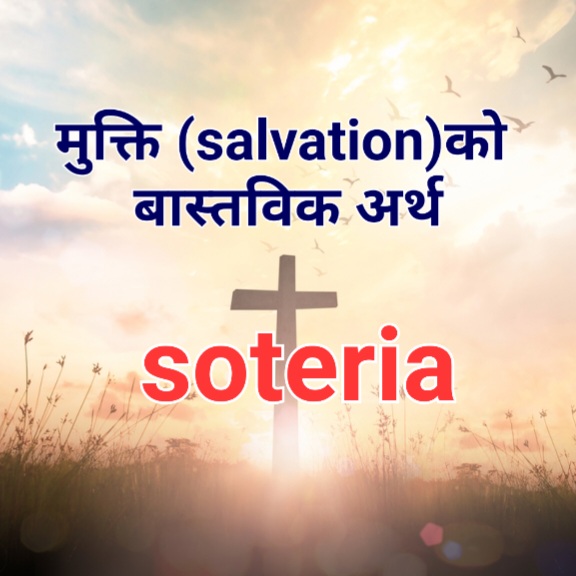Hindu-Christian Interaction in Nepal: Contextual Witness, Caste, and the Lived Realities of Faith
The dynamics of Hindu-Christian interaction in Nepal are shaped by profound cultural, religious, and social complexities. While Christianity offers a message of spiritual liberation and community, its growth is often hindered by deep-rooted cultural perceptions, especially related to caste, religious identity, and national belonging. Writers such as H.L. Richard, Dayanand Bharati, Bal Krishna Sharma, and Mangal Man Maharjan offer valuable frameworks that can help Christians in Nepal navigate these interactions with wisdom and sensitivity. They collectively call for a deeply contextualized Christian witness—one that listens to local voices, engages the culture respectfully, and addresses systemic realities such as caste and identity formation.
1. Beyond Abandoning Culture: Identity and the Cost of Conversion
In many parts of South Asia, including Nepal, conversion to Christianity is often perceived as cultural betrayal. As H.L. Richard argues, religion in these societies is intricately woven with one's social identity, community life, and cultural heritage.1 When people convert to Christianity, they are frequently accused of rejecting their ancestors, dishonoring their families, and embracing foreignness.
Dayanand Bharati, reflecting on his own journey of faith, critiques the tendency of Christian missionaries to create new cultural boundaries by expecting converts to change their dress, language, and community.2 He advocates instead for following Jesus as a bhakta, one who is deeply devoted within the cultural and religious framework of Hindu society. Bharati’s idea of Yeshu bhakti allows for continuity in cultural expression while still pointing to deep spiritual transformation. This is particularly relevant in Nepal, where becoming Christian often means entering a new socio-religious group, which isolates new believers from their families and communities.
This tension could be resolved if the Christian invitation emphasized spiritual allegiance to Jesus rather than institutional conversion to the "Christian religion" as a separate social identity.
2. The Caste System: A Barrier to Genuine Fellowship
Bal Krishna Sharma’s study, The Origin of Caste System in Hinduism and Its Relevance in the Present Context, brings to light one of the most insidious barriers to Christian growth and unity in Nepal: caste.3 Sharma traces the development of caste from its flexible and functional beginnings in the Rigvedic period to its rigid and oppressive form in Brahmanic literature. In the contemporary Nepali context, caste is not just a religious category but a social framework governing marriage, occupation, worship, and even one’s sense of worth.
Despite Christianity’s message of equality before God, caste consciousness often persists within Nepali churches. Sharma’s study—though optimistic in its conclusion that educating people on caste’s original meaning can foster dignity—also reveals the limitations of education alone. Caste, as Sharma himself notes, is integrated into every stage of life, from birth to death. The transformation required is not just intellectual but communal and spiritual.
Nepali Christians must ask: Do our churches replicate caste divisions under different names? Are we unintentionally upholding the same hierarchies the gospel came to undo?
3. Theological Comparison and Its Pitfalls: Lessons from Maharjan
Mangal Man Maharjan’s Comparative Study of Hinduism and Christianity in Nepal seeks to engage Hinduism and Christianity side by side, exploring concepts such as God, sin, and salvation.4 While his effort is commendable, the book also highlights the pitfalls of abstraction. As reviewer Mark Johnson notes, Maharjan often draws on Vedantic or Epic literature (e.g., the Bhagavad Gita) to define “Hinduism,” while overlooking the everyday religious practices of ordinary Nepali Hindus.5
This criticism is vital. The real-life beliefs and rituals of Nepali Hindus—such as ringing bells at shrines, placing offerings under sacred trees, or performing shraddha (ancestor rituals)—are far more formative than philosophical treatises on Brahman. Johnson rightly asks: what does the woman next door believe? What does the grocer, the student, the taxi driver believe and practice?
If Christian engagement with Hinduism in Nepal remains stuck at a theoretical level, it will fail to reach real people. Maharjan’s work reminds us that contextual theology must begin not only with sacred texts but also with careful observation of daily life. Rituals, symbols, and oral traditions are often more influential than scriptures in shaping faith for ordinary people.
4. Toward Contextual Discipleship: Bhakti as Bridge
A key solution to the challenges above lies in reimagining discipleship using the bhakti paradigm. Both Bharati and Richard argue that devotion (bhakti) is a central and culturally resonant concept in Hindu (and thus Nepali) religiosity. Rather than presenting Christianity as a new religion, it can be introduced as a fulfillment of the bhakti path—a deeper and personal relationship with the living God through Jesus.6
Using Yeshu satsangs (devotional gatherings focused on Jesus), Christian communities can incorporate indigenous music, rituals, and storytelling forms to convey biblical truths. This approach, already showing fruit in some parts of India, can allow Nepali believers to retain cultural identity while experiencing spiritual renewal.
Moreover, this model prevents unnecessary rupture from family and social networks. It offers a pathway for those who want to follow Jesus but are hesitant to abandon their entire cultural world. It affirms that faith in Christ does not require cultural suicide.
5. Practical Implications for the Nepali Church
The insights from these scholars converge on a few urgent tasks for the Church in Nepal:
Decolonize the gospel. Christian identity in Nepal must be disentangled from Western cultural expressions. Language, dress, music, and liturgy should reflect local aesthetics and values.
Root out casteism in the Church. Churches must actively dismantle caste-based barriers within their leadership, fellowship, and community structures. Baptism must mark the beginning of a new humanity, not a mere shift of religious label.
Listen to lived Hinduism. Evangelism and discipleship must begin with understanding what local Hindus actually believe and practice. As Maharjan’s book inadvertently shows, theology must flow from street-level observations, not just classical texts.
Reimagine discipleship through bhakti. Christian formation should embrace the language of devotion, honor, and sacred relationship that is already familiar to Hindu/Nepali audiences.
Conclusion: A Call to Humble Incarnation
Nepal’s religious landscape presents both a challenge and an opportunity. The challenge is the deep entanglement of religion with caste, identity, and culture. The opportunity lies in re-presenting Christ not as a Western import, but as the fulfillment of Nepali spiritual longing—a personal God who invites all into a community of love, justice, and grace.
As these authors collectively affirm, the path forward is not through triumphalism but through incarnation—entering the world of our neighbors with humility, listening to their stories, honoring their rituals, and pointing them gently to the One who came full of grace and truth.
References
H.L. Richard, Rethinking Hindu Ministry (Pasadena: William Carey Library, 2011).
Dayanand Bharati, Living Water and Indian Bowl: An Indian Christian's Reflections on Christian Ministry in the Indian Context (Delhi: ISPCK, 2004).
Bal Krishna Sharma, The Origin of Caste System in Hinduism and Its Relevance in the Present Context (Kathmandu: Samdan Publishers, 1999).
Mangal Man Maharjan, Comparative Study of Hinduism and Christianity in Nepal (Kathmandu: Ekta Books, 2002).
Mark Johnson, review of Comparative Study of Hinduism and Christianity in Nepal by Mangal Man Maharjan, unpublished review.
See Bharati, Living Water and Richard, Rethinking Hindu Ministry.



















